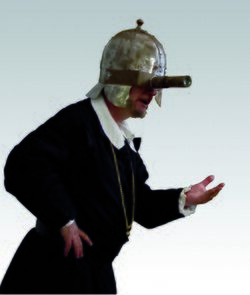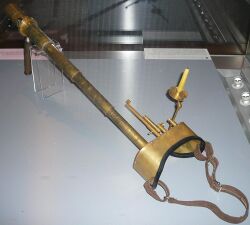Astronomy:Celatone
From HandWiki
Short description: Navigational aid reliant on tracking Jupiter's moons in the sky
The celatone was a device invented by Galileo Galilei to observe Jupiter's moons with the purpose of finding longitude on Earth. It took the form of a piece of headgear with a telescope taking the place of an eyehole.
Modern versions
In 2013, Matthew Dockrey created a replica celatone, using notes from a version created by Samuel Parlour. From April 2014 to January 2015, Dockrey's celatone was on display in the Royal Observatory, Greenwich in east London.
See also
- Longitude prize
- Galilean moons
References
- Sobel, Dava (1995). Longitude: The True Story of a Lone Genius Who Solved the Greatest Scientific Problem of His Time. Penguin. ISBN 0-14-025879-5.
External links
- Video animation of a Celatone and its use in discovering the longitude for marine navigation
- Dockrey celatone
- "Apparatus to render a telescope manageable on shipboard"



